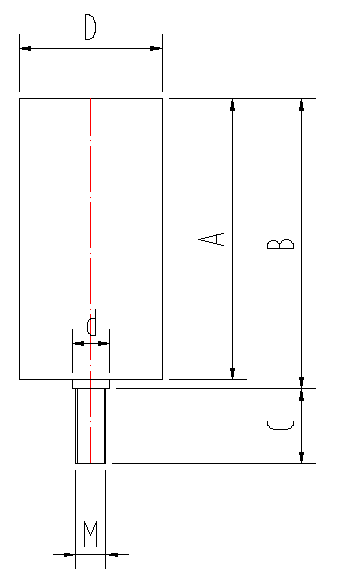 Afrikaans
Afrikaans  Albanian
Albanian  Amharic
Amharic  Arabic
Arabic  Armenian
Armenian  Azerbaijani
Azerbaijani  Basque
Basque  Belarusian
Belarusian  Bengali
Bengali  Bosnian
Bosnian  Bulgarian
Bulgarian  Catalan
Catalan  Cebuano
Cebuano  Corsican
Corsican  Croatian
Croatian  Czech
Czech  Danish
Danish  Dutch
Dutch  English
English  Esperanto
Esperanto  Estonian
Estonian  Finnish
Finnish  French
French  Frisian
Frisian  Galician
Galician  Georgian
Georgian  German
German  Greek
Greek  Gujarati
Gujarati  Haitian Creole
Haitian Creole  hausa
hausa  hawaiian
hawaiian  Hebrew
Hebrew  Hindi
Hindi  Miao
Miao  Hungarian
Hungarian  Icelandic
Icelandic  igbo
igbo  Indonesian
Indonesian  irish
irish  Italian
Italian  Japanese
Japanese  Javanese
Javanese  Kannada
Kannada  kazakh
kazakh  Khmer
Khmer  Rwandese
Rwandese  Korean
Korean  Kurdish
Kurdish  Kyrgyz
Kyrgyz  Lao
Lao  Latin
Latin  Latvian
Latvian  Lithuanian
Lithuanian  Luxembourgish
Luxembourgish  Macedonian
Macedonian  Malgashi
Malgashi  Malay
Malay  Malayalam
Malayalam  Maltese
Maltese  Maori
Maori  Marathi
Marathi  Mongolian
Mongolian  Myanmar
Myanmar  Nepali
Nepali  Norwegian
Norwegian  Norwegian
Norwegian  Occitan
Occitan  Pashto
Pashto  Persian
Persian  Polish
Polish  Portuguese
Portuguese  Punjabi
Punjabi  Romanian
Romanian  Russian
Russian  Samoan
Samoan  Scottish Gaelic
Scottish Gaelic  Serbian
Serbian  Sesotho
Sesotho  Shona
Shona  Sindhi
Sindhi  Sinhala
Sinhala  Slovak
Slovak  Slovenian
Slovenian  Somali
Somali  Spanish
Spanish  Sundanese
Sundanese  Swahili
Swahili  Swedish
Swedish  Tagalog
Tagalog  Tajik
Tajik  Tamil
Tamil  Tatar
Tatar  Telugu
Telugu  Thai
Thai  Turkish
Turkish  Turkmen
Turkmen  Ukrainian
Ukrainian  Urdu
Urdu  Uighur
Uighur  Uzbek
Uzbek  Vietnamese
Vietnamese  Welsh
Welsh  Bantu
Bantu  Yiddish
Yiddish  Yoruba
Yoruba  Zulu
Zulu Key Elements of a Belt Conveyor System for Efficient Material Handling
Components of a Belt Conveyor System
Belt conveyor systems are crucial components in various industries, facilitating the efficient movement of materials from one point to another. An understanding of their essential components is vital for optimal design, maintenance, and operation. Here, we explore the core components of a belt conveyor system.
1. Conveyor Belt The conveyor belt itself is perhaps the most critical component of the system. Generally made from materials such as rubber, fabric, or metal, the belt's choice depends on the materials being transported. For instance, heavy-duty belts are used in mining, whereas lighter belts work well in packaging applications. The belt's width, length, and thickness are tailored according to the specific requirements of the operation.
2. Drive System The drive system provides the necessary power to move the conveyor belt. It typically consists of electric motors, pulleys, and gearboxes. The motor converts electrical energy into mechanical energy which is transmitted through gears to the drive pulley. Proper selection of the drive system is crucial as it directly affects the conveyor's speed and efficiency.
3. Rollers Rollers support the belt and reduce friction, allowing for smoother operation. They are strategically placed along the conveyor’s length. There are various types of rollers, including return rollers, impact rollers, and self-aligning rollers, each serving a specific purpose such as supporting the load, absorbing impact, or ensuring the belt remains aligned.
components of belt conveyor system

4. Pulleys Pulleys play an essential role in guiding the belt and transferring power from the drive to the belt. The two main types of pulleys are drive pulleys and tail pulleys. Drive pulleys are located at the discharge end and are driven by the motor, while tail pulleys are situated at the loading end, helping in returning the belt.
5. Framework The framework comprises the structural elements that support and stabilize the conveyor system. This includes the support legs, side guards, and various brackets that ensure the belt operates at the correct height and alignment. The design of the framework must be robust enough to support the entire system's weight and the materials it carries.
6. Accessories Various accessories enhance the functionality of belt conveyor systems. These include belt cleaners, which remove debris from the belt surface; dust control systems to manage airborne particles; and safety guards that protect workers from potential hazards.
In summary, a belt conveyor system is composed of several integral components, each contributing to the system's overall efficiency and effectiveness. Understanding these parts is essential for anyone involved in the design, operation, or maintenance of conveyor systems. Whether used in manufacturing, logistics, or processing industries, these systems are designed to optimize the movement of materials, reducing manual labor and improving productivity.
-
Revolutionizing Conveyor Reliability with Advanced Rubber Lagging PulleysNewsJul.22,2025
-
Powering Precision and Durability with Expert Manufacturers of Conveyor ComponentsNewsJul.22,2025
-
Optimizing Conveyor Systems with Advanced Conveyor AccessoriesNewsJul.22,2025
-
Maximize Conveyor Efficiency with Quality Conveyor Idler PulleysNewsJul.22,2025
-
Future-Proof Your Conveyor System with High-Performance Polyurethane RollerNewsJul.22,2025
-
Driving Efficiency Forward with Quality Idlers and RollersNewsJul.22,2025





























